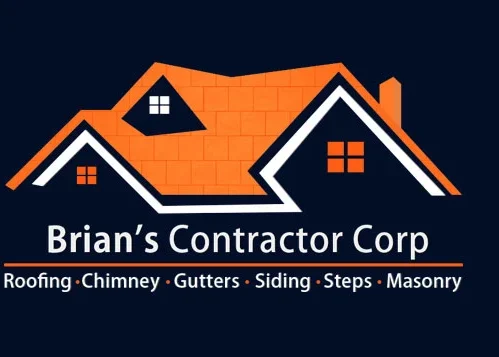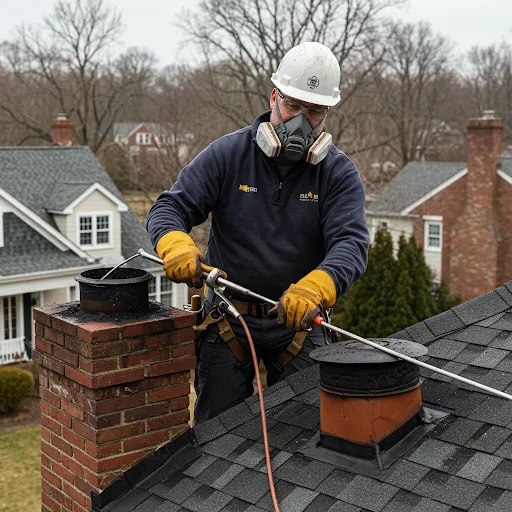
When was the last time you had your chimney swept? For many homeowners in Westchester County, the answer might be “too long ago” or even “never.” This oversight might seem inconsequential, but skipping chimney sweeping and regular maintenance creates serious hazards that lurk unseen within your home’s ventilation system.
Your chimney might appear sturdy from the outside, but inside, it could be harboring hidden dangers that threaten your family’s safety and your home’s structural integrity. As Westchester County experiences harsh winters, many homeowners rely heavily on their fireplaces for supplemental heating, making proper chimney service even more critical.
Skipping regular chimney sweeping might seem like a harmless way to save money, but the consequences can be devastating. Let’s explore the five most dangerous outcomes of neglecting this essential home maintenance task and how you can protect your Westchester home.
The Hidden Dangers Lurking in Your Westchester County Chimney
Westchester County homes face unique chimney maintenance challenges due to our region’s climate patterns and housing characteristics. Many local homes feature older masonry chimneys built decades ago when construction standards differed significantly from today’s safety requirements.
Our seasonal temperature fluctuations cause repeated freeze-thaw cycles that accelerate chimney deterioration. Combined with heavy precipitation and high humidity levels, these conditions create the perfect environment for accelerated creosote formation and structural damage.
The age of many Westchester homes also means that chimneys have often endured decades of use without proper maintenance. This historical neglect compounds current issues and increases risk factors exponentially. Learn more about chimney structure and discover how your fireplace’s hidden anatomy could be silently deteriorating behind those brick walls.
Danger #1 – Chimney Fires That Can Devastate Your Home
How Creosote Buildup Creates a Ticking Time Bomb
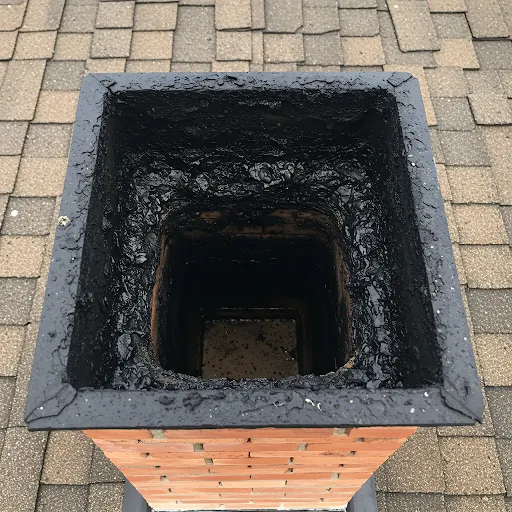
Creosote – a highly flammable, tar-like substance – accumulates inside your chimney every time you burn wood. In Westchester County’s cold climate, many homeowners use their fireplaces more frequently, leading to faster creosote buildup than in warmer regions.
Consider this scenario: A Westchester family enjoys their fireplace throughout winter without maintenance. Unknown to them, thick creosote has formed inside their chimney. One evening, a fire sends sparks up the flue, igniting the creosote. Within minutes, flames shoot from the chimney top, and the intense heat cracks the masonry, allowing fire to spread to the attic. What began as a cozy evening became a devastating house fire that could have been prevented with a timely chimney sweep appointment.
Warning signs of dangerous creosote buildup include:
- Unusual odors, especially when the fireplace isn’t in use
- Visible black, flaky deposits inside the fireplace
- Smoke backing up into your home
- Loud popping or cracking sounds when a fire is burning
Danger #2 – Carbon Monoxide Poisoning Risk to Your Family
Why Blocked Chimneys Create a Silent Killer in Your Home
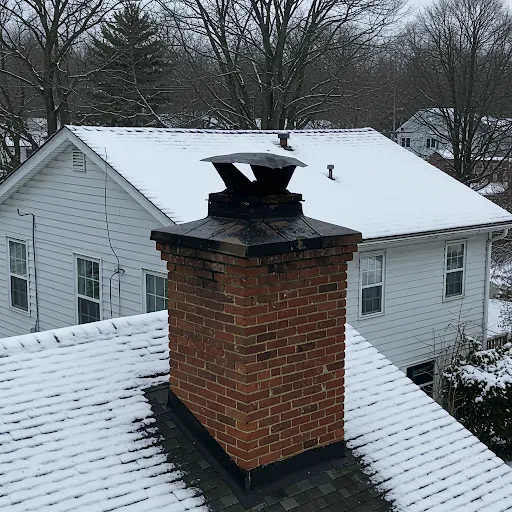
Carbon monoxide (CO) is produced during combustion and is normally vented safely outside your chimney. When blockages prevent proper ventilation, this odorless, colorless gas can seep into your living spaces.
Westchester’s winter conditions amplify this risk. When temperatures drop, animals seeking warmth may nest in your chimney, creating blockages. Additionally, freeze-thaw cycles can damage chimney liners and create gaps where CO can escape.
Carbon monoxide poisoning symptoms often mimic common winter illnesses like flu, making detection difficult without proper CO alarms. According to poison control centers, hundreds of CO poisoning cases occur annually in the New York metro area, with peaks during heating season.
Protect your family by:
- Installing carbon monoxide detectors on every level of your home
- Recognizing symptoms like headaches, dizziness, and nausea
- Ensuring proper chimney draft when using any combustion appliance
- Scheduling annual professional inspections before heating season begins
Danger #3 – Structural Damage Leading to Costly Repairs
The True Cost – Prevention vs. Major Chimney Rebuilds
Neglected chimneys deteriorate progressively, with minor issues evolving into major structural problems. Westchester’s freeze-thaw cycles accelerate this deterioration as water penetrates small cracks, freezes, expands, and creates larger fissures. Curious about the causes of chimney damage? Our guide reveals the sneaky culprits that could be destroying your chimney right now.
The financial impact of skipping regular maintenance can be staggering. A standard chimney inspection costs approximately $150-300 in Westchester County. Compare this to:
- Chimney liner replacement: $2,500-5,000
- Major chimney repair: $3,000-8,000
- Complete chimney rebuild: $10,000-20,000
Consider this scenario: A Mount Kisco homeowner notices minor mortar deterioration but postpones chimney repair to save money. Over two Westchester winters, water infiltrates the cracks, freezes repeatedly, and severely damages the chimney structure. What could have been a $300 repair now requires extensive chimney restoration costing over $15,000 – plus repairs to water-damaged interior walls and ceilings.
Common structural issues in Westchester County chimneys include:
- Spalling bricks (faces breaking off due to moisture)
- Deteriorated mortar joints
- Damaged or missing chimney caps
- Cracked or collapsed flue liners
- Leaning or tilting chimney structures
Danger #4 – Poor Indoor Air Quality Affects Your Health
When chimneys function improperly, smoke, soot, and particulate matter can backdraft into your living spaces. These contaminants significantly degrade indoor air quality and can trigger or worsen respiratory conditions.
Westchester’s air quality already faces challenges from regional pollution and seasonal allergens. A poorly maintained chimney compounds these issues, particularly during winter when homes remain tightly sealed against cold weather.
Those most vulnerable include children, elderly family members, and anyone with asthma, allergies, or other respiratory conditions. Even healthy adults may experience irritation, coughing, and discomfort from chimney-related air quality issues.
EPA studies show indoor air quality can be 2-5 times worse than outdoor air, with improper ventilation from heating systems being a primary contributor to indoor pollution.
Danger #5 – Wildlife Infestations Creating Dangerous Blockages
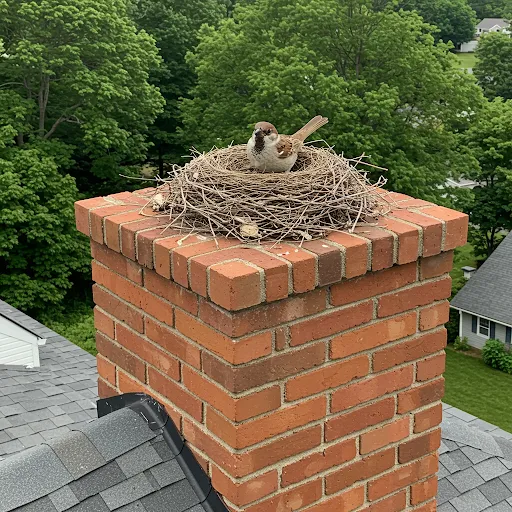
Westchester County’s abundant wildlife – including raccoons, squirrels, birds, and bats – frequently seek shelter in unprotected chimneys. These unwanted guests create nests that block proper ventilation and introduce health hazards.
Animal nests are highly combustible and can ignite when the fireplace is used, potentially causing a chimney fire. Additionally, debris from nests can fall into the flue, creating dangerous blockages that trap carbon monoxide and smoke.
Consider this scenario: A White Plains family returns from summer vacation and lights their first fall fire without a chimney inspection. A family of birds had nested in their chimney over the summer. The nest materials catch fire, causing smoke to pour into their living room and damaging the flue liner. What should have been a cozy evening becomes an emergency requiring fire department intervention and eventual chimney rebuild.
Beyond fire hazards, wildlife introduces:
- Parasites and disease vectors into your home
- Unpleasant odors from nesting materials or deceased animals
- Noise disturbances from animals moving within the chimney
- Potential entry points for pests to access other areas of your home
How Regular Chimney Sweeping Protects Your Westchester Home
Professional chimney maintenance provides comprehensive protection through a systematic process. During inspection, certified technicians examine your entire chimney system from top to bottom using specialized equipment.
For Westchester homes, annual inspections represent the minimum recommendation, with homes using fireplaces frequently (more than twice weekly) benefiting from bi-annual service. The ideal timing is late summer or early fall, before heating season begins.
A thorough professional inspection includes:
- Video scanning of the floor interior to detect hidden damage
- Measurement of creosote buildup levels
- Assessment of structural integrity
- Evaluation of the chimney cap, crown, and flashing
- Check for proper draft and ventilation
Regular maintenance not only prevents the five dangers discussed but also improves heating efficiency, extends chimney lifespan, and provides documented safety certification that may benefit your homeowner’s insurance.
Safeguard Your Family and Home Today
The dangers of skipping chimney sweeping extend far beyond inconvenience – they threaten your family’s safety, your home’s structural integrity, and your financial security. In Westchester County’s climate, these risks intensify with each passing season.
Remember the key warning signs that indicate your chimney needs immediate attention:
- Smoky odors when the fireplace isn’t in use
- Visible soot or creosote buildup
- Poor draft or smoke entering your home
- White or yellow staining on exterior masonry
- Crumbling mortar or damaged bricks
Don’t wait for an emergency to address these critical maintenance needs. Schedule a professional chimney inspection today to protect what matters most – your family and home. The peace of mind that comes from knowing your home heating system is safe and efficient is truly priceless during Westchester’s cold winters.
CALL US AT 929-570-7620


